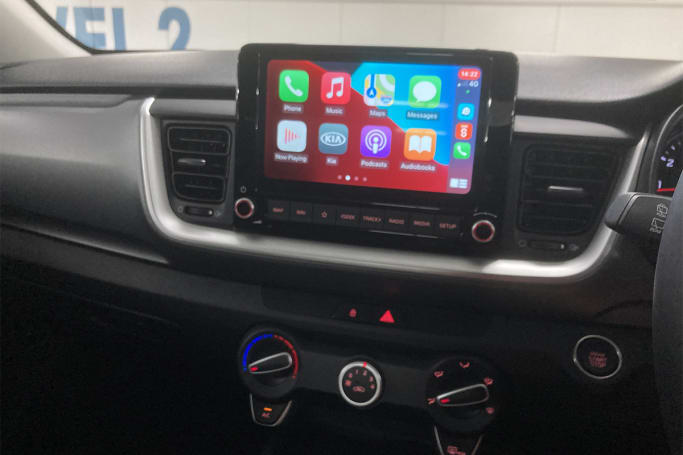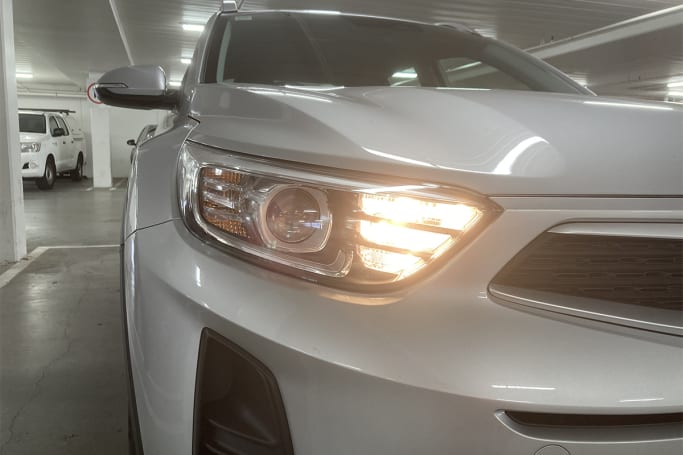Like Mazda and Hyundai, Kia forgoes the turbo engine route at the bottom and middle of the Stonic range in order to achieve a lower price point, meaning it is possible to buy a base Stonic S manual from $21,490, or $22,990 driveaway for the foreseeable future.

Our Sport Auto is $25,990 driveaway – saving about $3800 on on-road costs depending on where you live in Australia – making it compelling value given what’s included – we’re talking push button start, satellite navigation, powered folding mirrors, audio control-mounted/leather-trimmed steering wheel and 17-inch alloy wheels.

That’s on top of the base S’ autonomous emergency braking (AEB) with pedestrian and cyclist detection, forward collision warning, driver attention alert, lane following assist and six airbags, as well as an 8.0-inch touchscreen with reverse camera and multi-device Bluetooth capability, cruise control, auto on/off headlights, rear parking sensors and seven-year/unlimited kilometre warranty.
Strangely, though, the wireless Apple CarPlay/Android Auto standard in the S becomes wired for Sport and high-grade GT-Line. At least the latter adds a body kit, imitation leather upholstery, climate control, privacy glass, auto-dimming mirror, LED lighting, and a sunroof or two-tone paint job for its $4K premium.

Oh, and a 74kW/172Nm 1.0-litre three-cylinder turbo petrol engine and seven-speed dual-clutch transmission in lieu of a 74kW/133Nm 1.4-litre naturally-aspirated four-pot unit with a six-speed auto. That’s a biggie. Metallic on all grades costs another $520.
So, is our $26K-driveaway Stonic Sport auto good value? Yes, markedly so, though there are one or two qualifications.
Nowadays sourced out of Japan instead of Thailand, the equipment-equivalent CX-3 is the Maxx Sport from $26,890 before on-road costs (ORC), but the mid-spec Kia’s cost-equivalent is the base Neo Sport (from $24,890 +ORC). But things get complicated, because while the latter misses out on all that cabin space, sat-nav, alloy wheels, leather wheel and two years of extra warranty, its standard 110kW/195Nm 2.0-litre engine/auto combo brings a h-u-g-e performance advantage. Stop/start is also included to help save fuel.

The base Yaris Cross GX from $26,990 +ORC with the 88kW/145Nm 1.5-litre three-cylinder atmo engine and CVT auto is roughly $5000 more expensive than the better-specified but less powerful (and not as spacious) Stonic Sport, while – against the circa-$26,200 driveaway base Venue powered by a 90kW/151Nm 1.6-litre four-cylinder atmo auto, the Stonic is larger and roomier but has a smaller engine. The Kia also beats both for warranty too.
Things certainly are looking super-Stonic for the Sport.





















